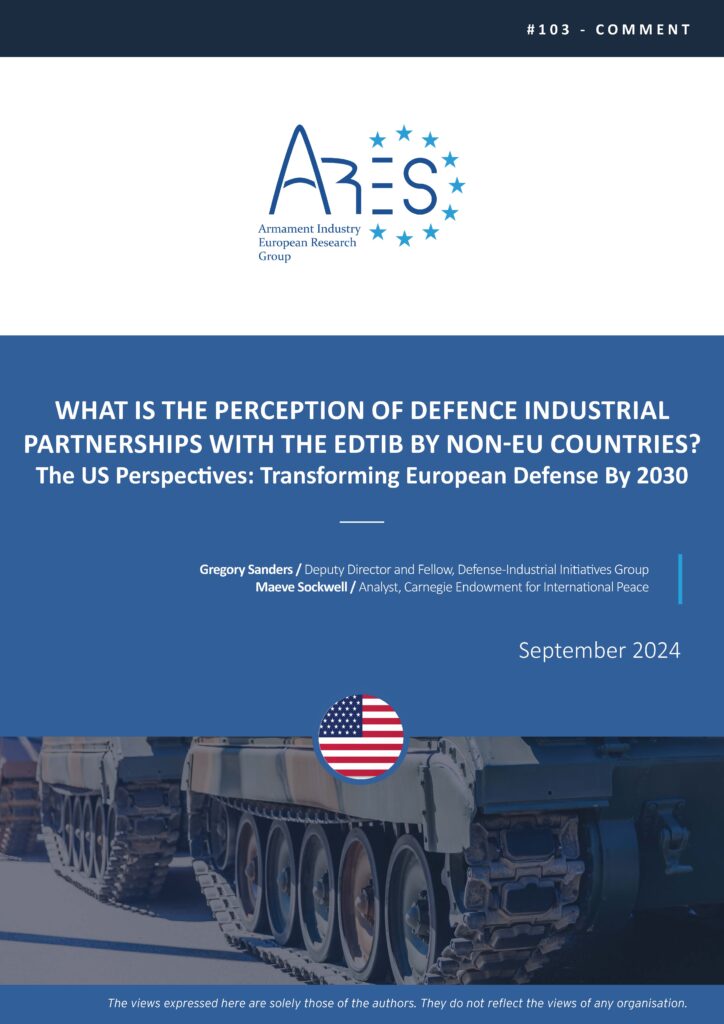Notes / Ares Group - The Armament Industry European Research Group
1 octobre 2024
What Is the Perception of Defence Industrial Partnerships with the EDTIB by Non-EU Countries? The US Perspectives: Transforming European Defense By 2030

Since Russia’s invasion of Ukraine in 2022, the European Union (EU) and European Ministries of Defence have made foundational changes to their policies and plans, calling for a generational transformation to strengthen European defence. The ongoing fear that the United States (US) might reduce its support for Europe has pushed these efforts forward, as European leaders deal with an unpredictable US political situation.
Europe’s strategic shift outlined in the EU’s first ever European Defense Industrial Strategy (EDIS), presents a mixed outlook for US policymakers and defence industrial stakeholders, who hold a range of perspectives on the future of US defence industrial cooperation with global partners. This paper outlines three competing US visions for the future of global defence industrial cooperation, assessing how each of these perspectives sees the role of the European Defense and Technological Industrial Base (EDTIB). Although these models contrast in important ways, proponents of each share frustrations with the existing state of the EDTIB and view European efforts to galvanise change as insufficient to achieve transformational change.

